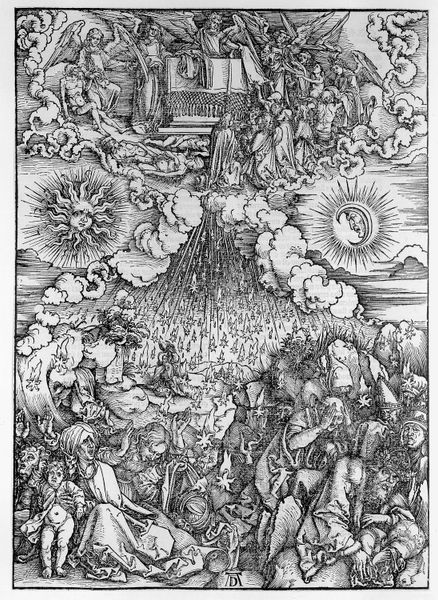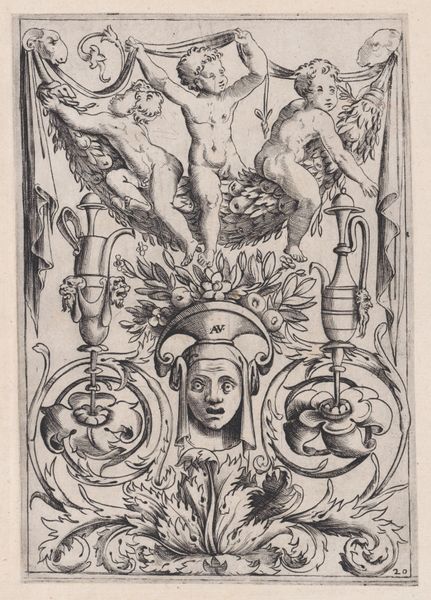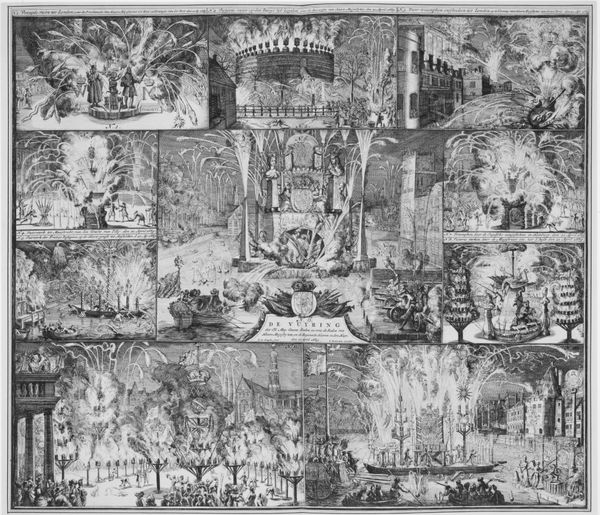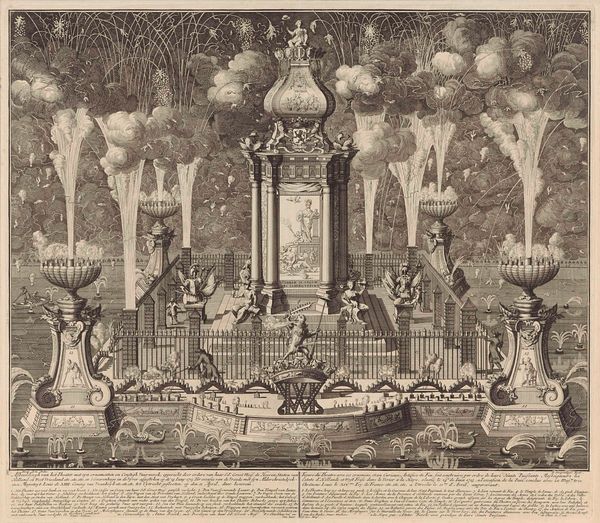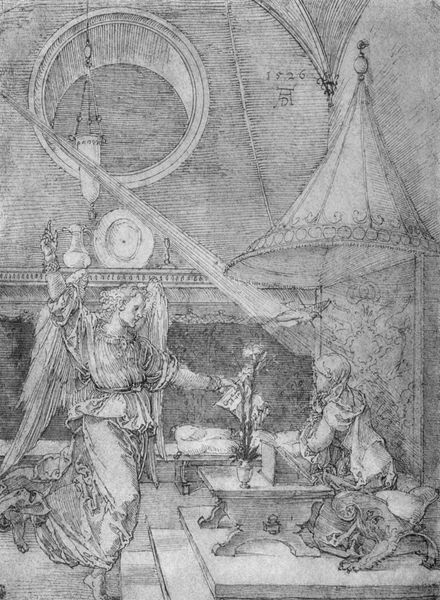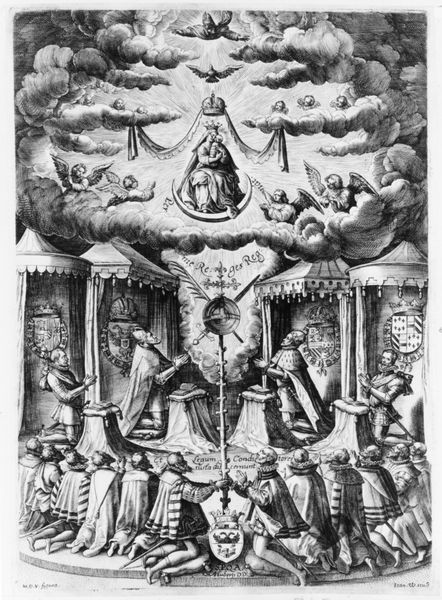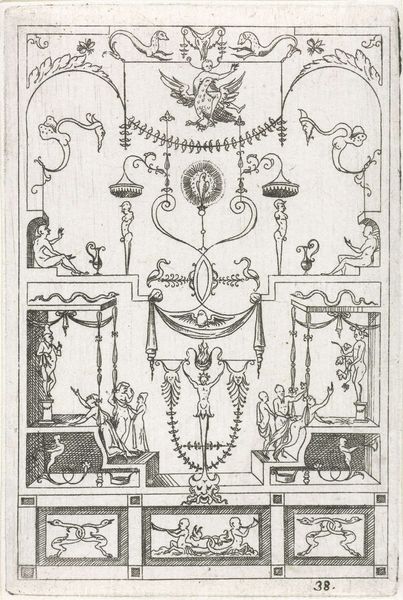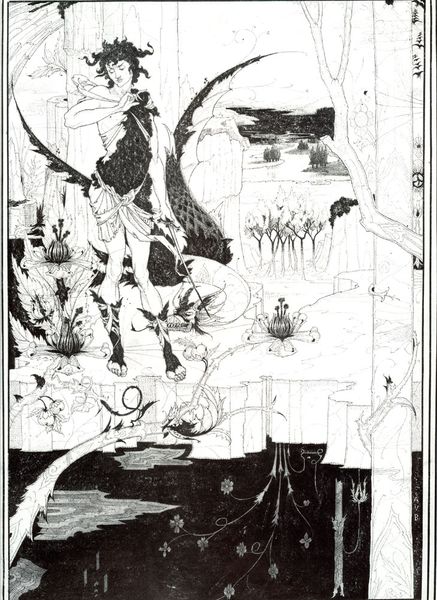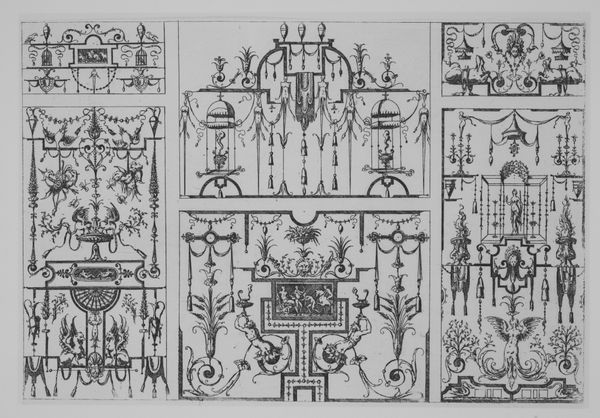
drawing, print, etching, ink, engraving
#
drawing
#
ink drawing
#
allegory
#
pen drawing
# print
#
etching
#
landscape
#
mannerism
#
ink
#
linocut print
#
ink drawing experimentation
#
geometric
#
cityscape
#
history-painting
#
engraving
Copyright: Public Domain
Curator: So, tell me about this etching by Francesco Curti titled "Garden of Mathematical Sciences," dating roughly between 1615 and 1670. What jumps out at you? Editor: It’s... a lot. I mean, there’s so much going on – gardens, geometric shapes, and even a peacock! The sheer density of objects is overwhelming; it's like a mathematical equation made visual. What exactly am I looking at? Curator: You're looking at a visualization of knowledge, shaped by its material conditions. How was this print produced? Think about the labor and skill involved in etching and engraving at this time. Doesn’t the sheer *craft* embedded in its production challenge your ideas of what constitutes ‘high art?’ Editor: That's interesting; I hadn't considered the production process. Knowing it’s an etching makes me appreciate the intricacy more, but I'm still lost in the allegory. What meaning was the artist trying to get across through the mathematical symbols in the context of this "garden?" Curator: Look at the juxtaposition of nature—the garden—with man-made, geometrically perfect shapes. Doesn't it speak to a specific type of control? Think about what it means to “garden” or to cultivate. The instruments aren’t just symbols; they’re objects of utility representing power. Is this perhaps, about humankind attempting to contain the wildness of nature itself? Also consider the coat-of-arms and regal figure placed atop a somewhat fantastical cityscape. The act of patronage would have been extremely important in artistic circles at this time, so I would ask myself - is Curti engaging in some degree of praise here? Editor: That does reframe things. I initially saw it as just a decorative garden scene, but considering the materials, the techniques of production, and the instruments displayed here, the power dynamics become apparent. It changes everything, thinking about whose "garden" this really is. Curator: Exactly. And what implications might that have, regarding the relationship between artist, patron, and society as a whole at this point in history? Food for thought. Editor: Definitely. It’s made me realise that to understand this print fully, I need to think about who made it, how, and for whom, and I appreciate art created using these skills and traditions far more.
Comments
No comments
Be the first to comment and join the conversation on the ultimate creative platform.
